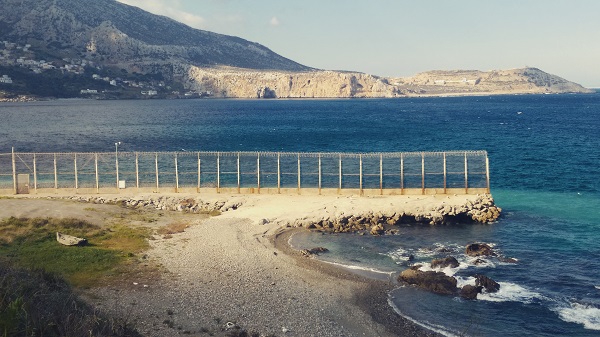On 13 February 2020, the Grand Chamber of the European Court of Human Rights (GC) published its judgment in the case of N.D and N.T v Spain (Application Nos. 8675/15 and 8697/15) concerning the immediate return of two men to Morocco after attempting to cross the border of the Melilla enclave.
The applicants, nationals of Mali and Côte d’Ivoire, arrived in Morocco independently of one another after fleeing from their countries of origin. On 13 August 2014, a group of around 600 people attempted to cross the border fence. On the other side, N.D and N.T were helped down by the Spanish border guards and immediately handed over to Moroccan authorities. They allege that no identification procedures were carried out in Spanish territory and that they were not given the opportunity to explain their individual circumstances before being removed to Morocco. They complained that they were subject to a collective expulsion without an individual assessment of circumstances and legal assistance contrary to Article 4 of Protocol No. 4. They also complain under Article 13 in conjunction with Article 4 Protocol No. 4 that they had no access to an effective remedy with suspensive effect by which to challenge their immediate return. In its Chamber judgment, the Court had previously found violations in relation to both complaints.
The GC first addressed the question of whether the border fence on the Spanish enclave was under Spanish jurisdiction. It observed that the Spanish authorities had acted alone in removing the applicants before noting that the application of Convention rights cannot be selectively restricted due to an artificial reduction in the scope of territory. The GC then addressed whether the removal of the applicants amounted to an expulsion or ‘non-admission’ of entry. The GC interpreted expulsion in the generic sense, consistent with previous findings, to mean any forcible removal irrespective of, inter alia, the lawfulness of an applicant’s stay. Indeed, a collective expulsion is characterised as an absence of a reasonable and objective examination of each applicant’s particular case. In the present case, both requirements were satisfied.
However, the GC also highlighted, in accordance with its settled case law, that an applicant’s own conduct is a relevant factor in assessing the protection afforded under Article 4 Protocol No. 4. Indeed, in situations applying to persons who cross a land border in an unauthorized manner, taking advantage of the group’s large numbers, the GC will consider whether the respondent State provided genuine and effective access to means of legal entry. In this case, the GC was not convinced that the State had failed to provide such access, and concluded that the applicants had in fact placed themselves in jeopardy by participating in storming the border rather than using the existing procedures. In particular, the GC observed that the applicants could have applied for visas or for international protection at a border crossing point. It concluded that the applicants’ expulsions did not violate Article 4 Protocol 4. However, it added that this finding does not alter the broad consensus within the international community regarding the obligation for States to protect their borders in a manner compliant with Convention rights, highlighting in particular the principle of non-refoulement.
Furthermore, the GC found that the applicants placed themselves in an unlawful situation by deliberately attempting to enter Spain as part of a large group rather than using available legal procedures. The lack of available individual procedures to challenge the removal was therefore deemed a consequence of the applicant’s unlawful attempt to gain entry. The GC held there was no violation of Article 13 in conjunction with Article 4 Protocol 4.
For further information:
- EDAL, ECtHR N.D. and N.T. v. Spain (nos. 8675/15 and 8697/15) [Article 4 Protocol 4, Article 13 ECHR], 3 October 2017, October 2017
- ECRE, Spain: Two Persons Pushed Back to Morocco after 300 attempt to Cross Border Fence in Ceuta, January 2020
- ECRE, Spain: Summary Expulsion of 42 People to Morocco, January 2020
- ECRE, Spain: Rights of Asylum Seekers Deteriorating at Border with Morocco, October 2019
- ECRE, Spain Curbs Last State-Run Rescue Operation in EU, August 2019
- ECRE, Situation Worsens for Migrants on Western Mediterranean Route, June 2019
- ECRE, EU Report Links Drop in Arrivals to Spanish Moroccan Cooperation, May 2019
- ECRE, Op-ed: The Rights of Minors – UN Condemns Spain’s Push-Backs and Demands Legal Amendments, March 2019
- ECRE, 34 refugees die waiting more than 24 hours as ships sinks off the coast of Morocco, 5 October 2018
- ECRE, Spain: The UN Condemns Spain for Push-back Policy Violating Children’s Rights, February 2019
- AIDA, Country report Spain, Update 2018, March 2019
Photo: ECRE
This article appeared in the ECRE Weekly Bulletin . You can subscribe to the Weekly Bulletin here.

